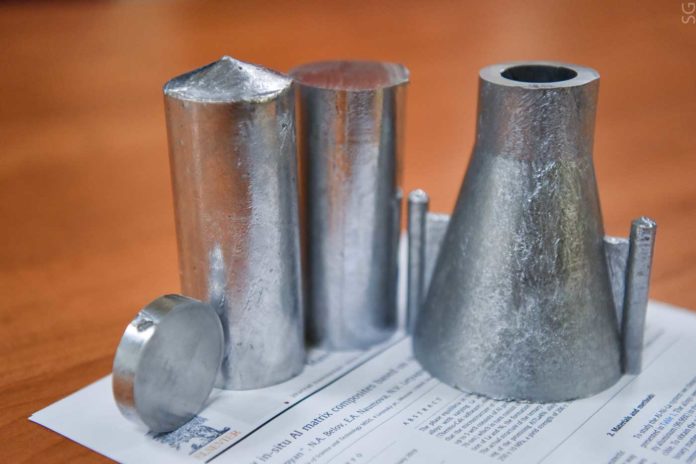Aluminum is one of the most commonly used elements in the world, and for good reason. It’s malleable, extremely resistant to corrosion and is electrically conductive. It is also the most promising materials for aeronautics and automobile industry.
Now, scientists at the National University of Science and Technology (MISIS) have discovered a simple and efficient way of strengthening aluminum-based composite materials. By doping aluminum melt with nickel and lanthanum, scientists were able to create a material combining benefits of both composite materials and standard alloys: flexibility, strength, lightness.
Torgom Akopyan, one of the authors, researcher at NUST MISIS Department of Metal Forming said, “Our research group, led by Professor Nikolai Belov, has worked on the creation of aluminum-based composites for many years. Al-Ni-La composite is one of such projects, aimed at creation of “natural” aluminum-based composite material with more than 15% vol. of doping elements. A feature of the new development is the high reinforcing ability of the chemical compounds with ultrafine structure: the diameter of the reinforcing elements does not exceed several tens of nanometers.”
“Previously, researchers were limited to the study of systems in which it is obviously impossible to obtain an effective reinforcing structure. Or they manufactured composite materials by labor-intensive powder metallurgy methods (sintering of powders), or liquid-phase technologies of kneading nanoparticles in the melt.”
Development of NUST MISIS scientist solves the problem of non-uniform reinforcement and low density of “powder” composites: if a melting technique is used, after Al-Ni-La crystallization the diameter of doping particle does not exceed 30-70 nanometers. Thanks to “natural” crystallization, particles are distributed uniformly, forming a reinforcing structure. Hence, the composite becomes stronger and more flexible than its powder analogs.
Torgom said, “Our composite already demonstrates better characteristics than its analogs, including foreign ones. However, we are not going to stop here, and in the future, we plan to continue working on the creation of more advanced, complex (3-, 4- and more-phase) and cheap composites, the production cycle of which will include the use of aluminum of technical purity and cheaper alloying components.”
Scientists suggest that the developed material has primary application in aeronautics and automobile industry, as well as for the design of modern robotics, including copters, where reducing the weight of the drone is critical.
The article on the research is published in Materials Letters.
